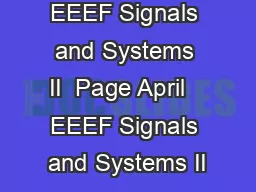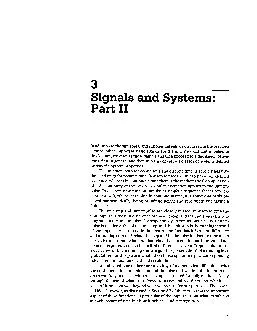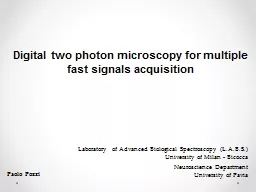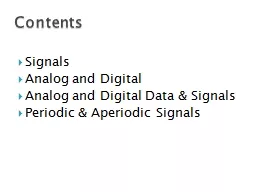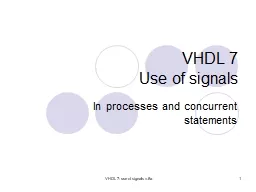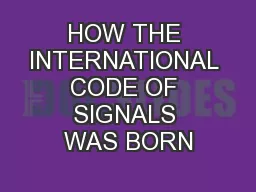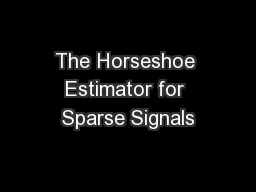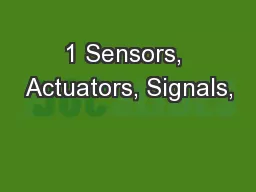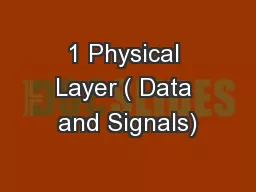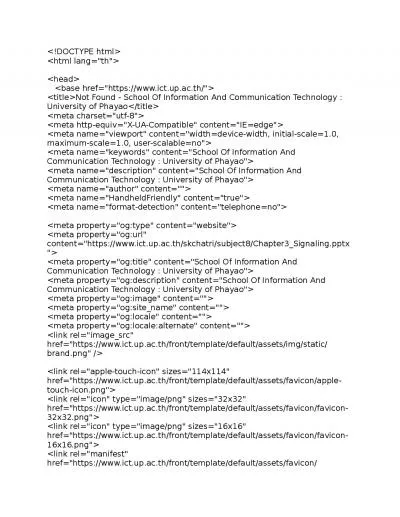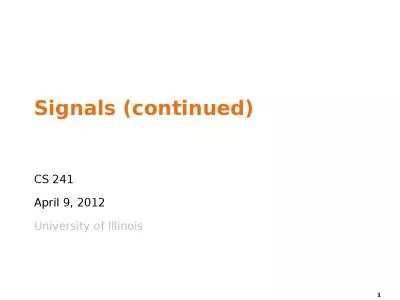PPT-Digital Signals and Systems
Author : yoshiko-marsland | Published Date : 2017-09-30
1 A discretetime signal is a function of an integer variable In the DS processor the signal is represented by the discrete encoded values with a finite precision
Presentation Embed Code
Download Presentation
Download Presentation The PPT/PDF document "Digital Signals and Systems" is the property of its rightful owner. Permission is granted to download and print the materials on this website for personal, non-commercial use only, and to display it on your personal computer provided you do not modify the materials and that you retain all copyright notices contained in the materials. By downloading content from our website, you accept the terms of this agreement.
Digital Signals and Systems: Transcript
Download Rules Of Document
"Digital Signals and Systems"The content belongs to its owner. You may download and print it for personal use, without modification, and keep all copyright notices. By downloading, you agree to these terms.
Related Documents


